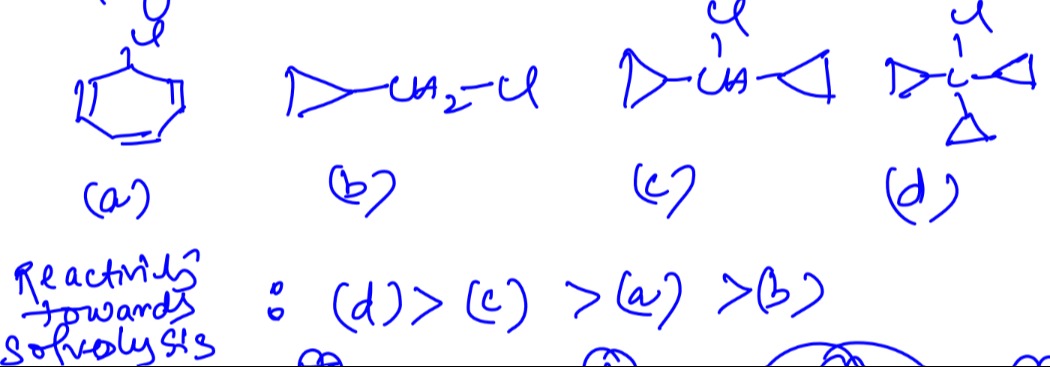Question
Question: Which of the following is the correct order of reactivity towards solvolysis?...
Which of the following is the correct order of reactivity towards solvolysis?

A
(a) > (b) > (c) > (d)
B
(d) > (c) > (a) > (b)
C
(d) > (c) > (b) > (a)
D
(a) > (c) > (d) > (b)
Answer
(d) > (c) > (b) > (a)
Explanation
Solution
The reactivity of organic compounds towards solvolysis depends on the stability of the carbocation formed as an intermediate. A more stable carbocation leads to a faster solvolysis reaction.
- (a) Chlorobenzene: Forms a highly unstable phenyl carbocation.
- (b) Cyclopropylmethyl chloride: Forms a cyclopropylmethyl carbocation, stabilized by resonance with one cyclopropane ring.
- (c) (cyclopropyl)2CHCl: Forms a tertiary carbocation stabilized by two cyclopropane rings.
- (d) (cyclopropyl)3CCl: Forms a quaternary carbocation stabilized by three cyclopropane rings.
The stability of carbocations increases with the degree of substitution and resonance stabilization. The stabilization provided by cyclopropane rings is substantial. Therefore, the stability order is: (d) > (c) > (b) > (a). Consequently, the reactivity order towards solvolysis is the same: (d) > (c) > (b) > (a).
